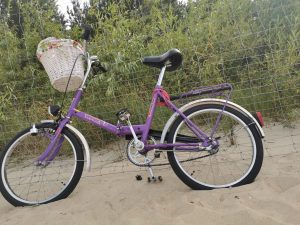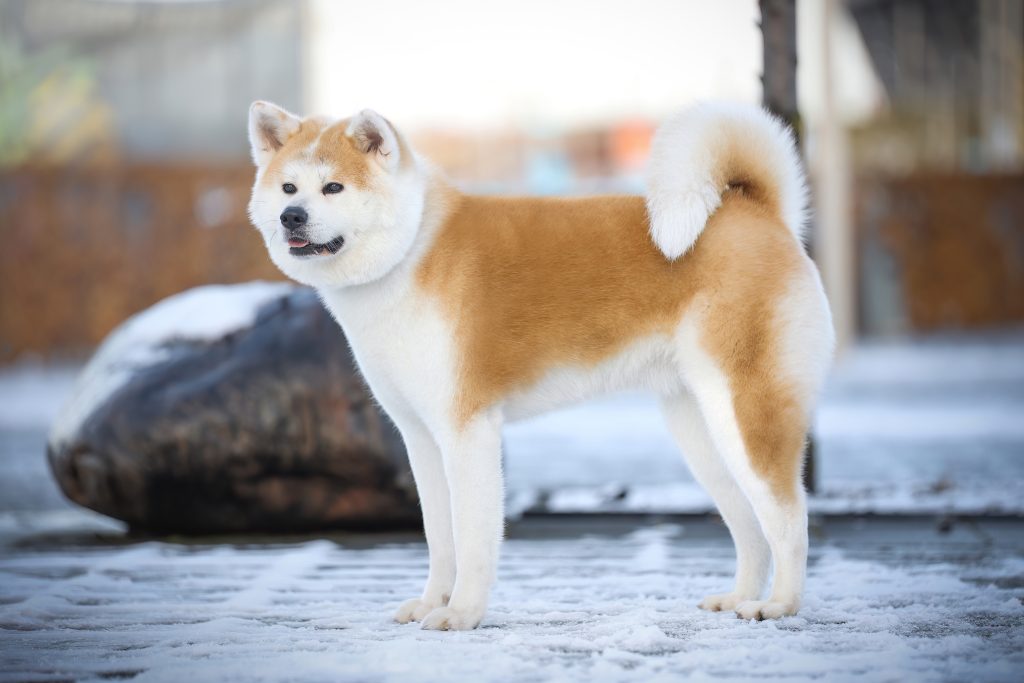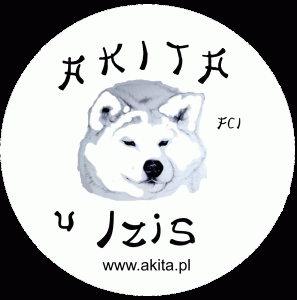The Akita is perfectly suitable for cycling trips, provided that it has already reached the appropriate age and is free from dysplasia (it has been tested for this). Of course, we are talking about typical Japanese Akitas with a standard weight depending on gender. Overweight dogs should be given exercise, increasing it gradually, as they get tired faster.
Shorter routes are always recommended at the beginning, but after a few training sessions you can confidently plan long trips out of the city. However, long is a relative term, because everything depends on the age and condition of the dog, but also on the weather and the terrain on which the dog has to run.
Before going on a bike trip, it is a good idea to take your Akita for a short walk (15-20 minutes) to let it do its thing - otherwise, while riding, it may suddenly drag you into the bushes - because it has to go when it needs to. You should also not feed your dog immediately before or immediately after leaving. The exception are rewards for correctly completing the command.
Let us remember that on sunny days, when the temperature is above 20 degrees C, the only option for a dog to run with a bike is to ride through a forest or park, because that is the only place where you can find shade and it is much cooler there than on the heated asphalt. Asphalt is not recommended for a dog to run on, as it will damage the pads of its paws - not only will it burn, but it will also often injure the dog until it bleeds. Let's try to remember this...
Let's also remember that our Akita does not sweat like humans, so it is easier to get sunstroke. It is unacceptable for a dog to run with a tight muzzle. The only possible option (only if it is absolutely necessary to use it) is a plastic muzzle in the form of a loose and airy basket - adjusted so that it does not touch the nose and so that the dog can freely open its mouth and breathe, or even stick out its tongue - because this is how our Akita cools itself. .
You should control your dog's degree of fatigue (especially if it is not used to such intense exercise) and do not push it too hard on your first trip together. Akita likes to run... but even pleasure should be moderated. Every few kilometers (sometimes more often - it depends on the weather and the condition of the Akita) you should take a break so that the dog can rest. On a trip, you should take water for your dog and a bowl with you and allow him to drink water at stops.
When riding a bike, an Akita should trot, as this is the pace at which all muscle groups work evenly. So not only will he run the furthest this way, but he will also develop his muscles wonderfully. If the dog is an adult (over 18 months old!), healthy, in good condition and trained - it can trot up to 20 kilometers on a bike without any problems. I don't recommend breaking records, because it is a rather large breed, so let's not try to make it a Siberian Husky, which is a much lighter dog and better suited for long distances. So let's not make our Akita run 50-60 kilometers, because it will not be good for his health.
It is VERY IMPORTANT not to start cycling runs (especially kilometer ones) too early. The joints of a young Akita are very sensitive to overload and we can accidentally give him dysplasia. So instead of a dog in good condition, we will have a crippled dog. Therefore, it is desirable to exercise moderation in a growing large breed dog. It's best to let him run as much as he wants. When riding a bike, he will run and run and won't tell us that he's had enough, because how could he? However, you can start learning how to run on a bike earlier, when your Akita learns to walk on your heel. First, let's try to go for a short walk with the Akita (on a leash) on the left leg and the bike on the right. This is to familiarize the dog with the bike, so from time to time you should bring the bike closer to it. Akita should treat the bike completely indifferently, because if not, we will have to make it happen. Prizes and a lot of our peace and patience will be helpful for this purpose. If a dog's bicycle is no longer unusual, we start teaching it left and then right turns. Once he has mastered this, he should be taught a new command (other than "leg" for side-walking), e.g. "bicycle", because when riding a bicycle (unlike when walking with his leg), the dog must run from the right side. Once again, you need to make the Akita recognize the bicycle as something ordinary and completely indifferent to it. If your Akita tolerates the bike and its maneuvers without any problems, it's time to get on the bike. And here we see how our pet's learning went. If we land on a fence, tree, etc., it means too little time is spent on getting the Akita used to riding a bike. Therefore, the entire procedure must be repeated again.
However, if our Akita behaved OK and you managed to cover a few meters together without any incident, it is worth stopping and rewarding him. We do this just in case things don't go so well. The dog will then remember the pleasant memory of running on the bike and will be more willing to try again. While learning, pay special attention to ensure that your Akita does not move forward in front of the bike, as this may result in it hitting its paw when turning right. If we make such an unfortunate turn, we must immediately distract our dog from it (e.g. with a reward). This is VERY IMPORTANT because the dog may remember it and run too far from the bike, as a result of which you may miss the lamppost from different sides ;-).
Moreover, before the trip, it is worth checking the Akita's reaction to dogs barking behind the fence and, if necessary, work on improving this behavior. If you don't check this in advance, don't be surprised when the bike suddenly accelerates dramatically. It is worth teaching the Akita to tolerate other dogs from a puppy. Early socialization with peers is the basis here.
To begin with, I would not recommend attaching the dog to a bicycle (although there are various types of suitable handles available for sale), it is better to hold the leash in your hand - as this gives you a chance to immediately react to the Akita's inappropriate behavior.
There are a few things to remember:
- exercise with your dog as much as necessary to make him feel confident on the bike;
- don't take your dog with you when it's hot;
- always have water for your dog with you (give him a rest and a drink every few km);
- do not exercise a dog younger than 18 months;
- the Akita runs next to the bike on a leash, on the right side of the bike (preferably at a trot);
- try to drive on green areas - because of the Akita's paws.





